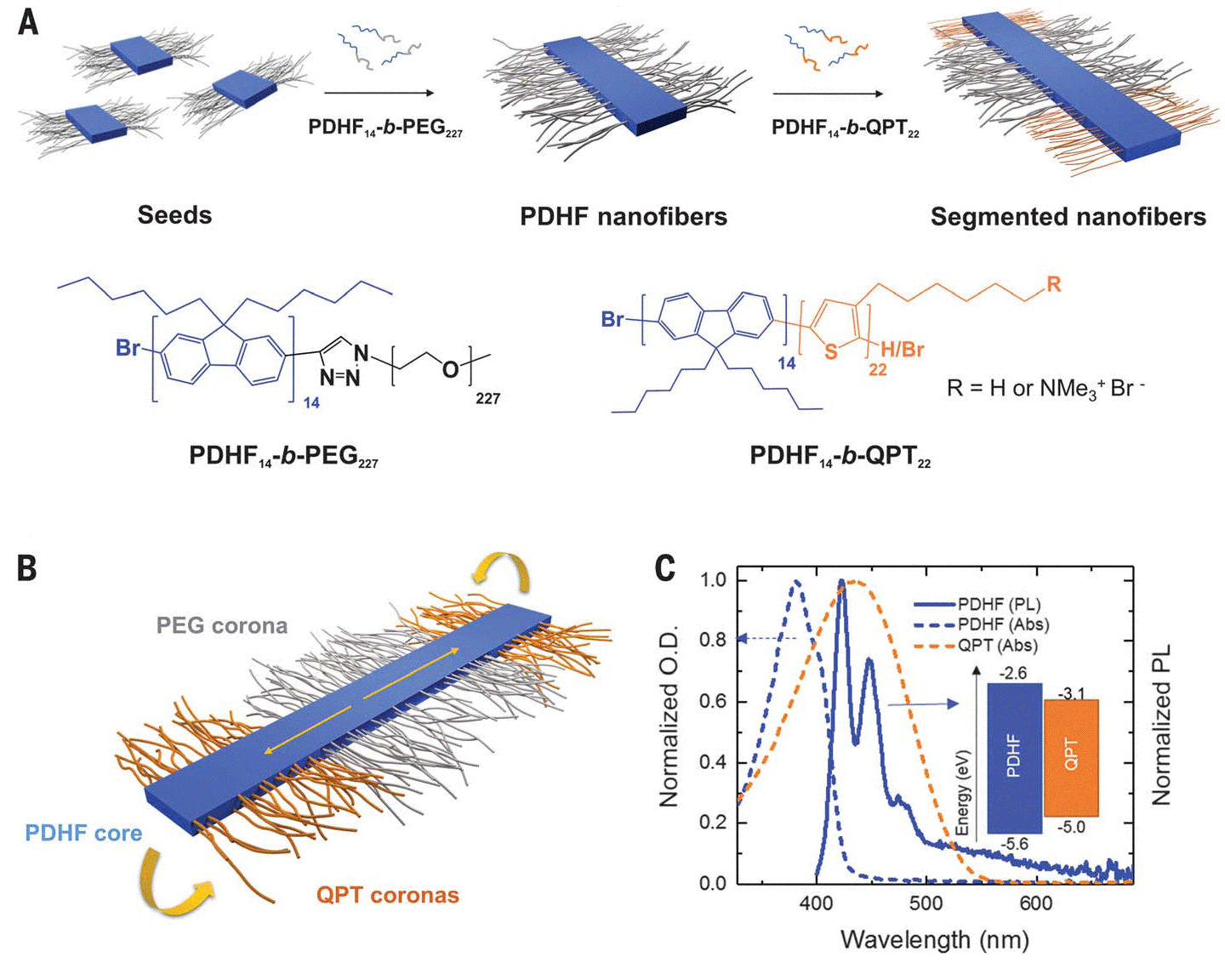Nanofibers in Science: realize long-distance electronic transport!

Long-range exciton transport inconjugated polymer nanofibers prepared by seeded growth
The first author: Xu-Hui Jin
Corresponding author: Ian Manners、George R. Whittell,Richard H. Friend
Abstract:
Easily processed materials with the ability to transport excitons over length scales of more than 100 nanometers are highly desirable for a range of light-harvesting and optoelectronic devices. We describe the preparation of organic semiconducting nanofibers comprising a crystalline poly(di-n-hexylfluorene) core and a solvated, segmented corona consisting of polyethylene glycol in the center and polythiophene at the ends. These nanofibers exhibit exciton transfer from the core to the lower-energy polythiophene coronas in the end blocks, which occurs in the direction of the interchain p-p stacking with very long diffusion lengths (>200 nanometers) and a large diffusion coefficient (0.5 square centimeters per second). This is made possible by the uniform exciton energetic landscape created by the well-ordered, crystalline nanofiber core.

1. Forming segmented PDHF nanofibers through multi-step self-assembly
(A)A schematic diagram illustrating the seed growth process and the structures of PDHF_14-b-PEG_227 and PDHF_14-b-QPT_22.
(B)Graphical illustration of a segmented B-A-B nanofiber structure with separate donor and acceptor domains.
(C)Normalized absorption of QPT homopolymers inTHF:MeOH(1:1)(orange dotted line)and unsegmented PDHF nanofibers(Ln=1605nm)(blue dotted line), and unsegment PDHF nanofiber photoluminescence(PL)emission(Ln=1605nm)(blue solid line),I_(0-0) and I_(0-1) of PL are respectively on 425nm and 455nm, and the inset shows the energy levels of PDHF and QPT.

